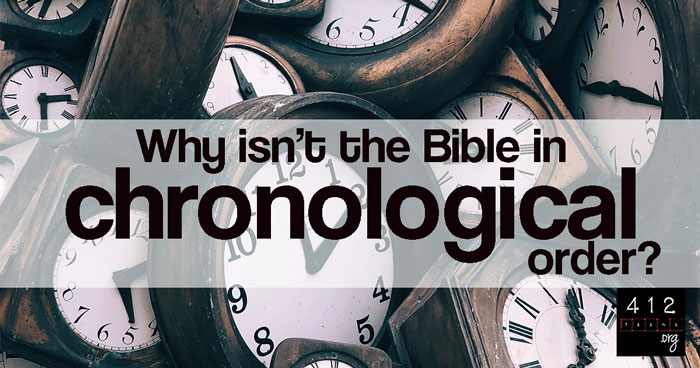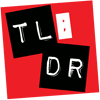Why isn't the Bible in chronological order?

When you crack open your Bible to the first chapter of the first book, the very first verse that greets you is this: “In the beginning God created the heavens and the earth” (Genesis 1:1). And if you were to flip to the very last verse of the last book, you would land in Revelation with this passage: “The grace of the Lord Jesus be with all. Amen” (Revelation 22:21).
The narrative of the Bible begins with the creation of the world and ends with the end of the world. Orderly, right? Just as you might expect from God’s Word. But if you try to read the Bible from cover to cover, you will eventually notice that not everything is in chronological order.
If you have a study Bible, you may discover a whole page or two between each book, devoted to explaining where the next part fits into the overall chronological timeline. Why? Because the whole of the Bible is not arranged in complete chronological order.
How is the Bible organized?
The books of the Bible are organized by what type of literature they are—historical, poetic, prophetic, or letters of instruction. Then within those categories, they are in chronological order.
For example, Genesis through Esther are primarily historical; they tells us what events happened among God's people during a period of time. Yet Job, which may have been written as early as Moses' time, is placed much later in the Old Testament because it is considered poetry and thus gets grouped in with Psalms and Proverbs.
Books of the Bible with Categories
- Genesis through Esther: Historical
- Job through Song of Solomon: Poetry
- Isaiah through Malachi: Prophecy
After Malachi, we flip the page and get into the New Testament. Between the events of the Old Testament and those of the New Testament, there were 400 years of silence during which God did not speak to the Jewish people. So everything in the New Testament does take place after the events of the Old Testament. With everything included in the New Testament, the authors assumed that the audience was already familiar with the Scriptures we find in the Old Testament.
- Matthew through Acts: Historical
- Romans through Jude: Letters to churches or individuals
- Revelation: Prophecy
If you find this kind of organization a bit confusing, never fear! Chronological Bibles do exist, putting the books of the Bible in a timeline order. This can be a beneficial study tool so you don’t have to reference back and forth to where what you're reading sits in the scope of biblical history. But remember that it's always helpful to know what type of literature you’re reading, as well, to help fully understand and interpret God's Word.
ALSO SEE:
- What is the Bible?
- Why should we read the Bible?
- What's the purpose of the Bible?
- Where should I start reading in the Bible?
- How should we study the Bible?
- What are some different ways to study the Bible?
- What is a study Bible?
- Who wrote the Bible?
- How can I get excited about reading the Bible?
- Is the Bible a reliable record of the original manuscripts?
- Is the Bible relevant today?
- What parts of the Bible apply today?
- What does it mean to read the Bible in context?
- Does the Bible contain errors, contradictions, or discrepancies?


TL;DR
Instead of being chronological, the books of the Bible are first divided into types of literature— historical, poetic, prophetic, or letters of instruction. Then within those categories, the books or letters are in basic chronological order. If you want to read the Bible in complete chronological order, you can find chronological Bibles that put everything into its actual timeline order despite the categories.

Writer: Heidi Joelle
Heidi Joelle spends her days staring at paperwork and making sure it is where it is supposed to be, how it is supposed to be, when it is supposed to be. And then she comes home and makes sure the porky little dog isn't eating a trashcan. Between these two events, she tries to learn and see as much of the world around her as possible.
